Elizabeth Davey Lochrie
Woman Alone In Her Own Way
In 1942, a prosperous Butte banker’s wife named Elizabeth Davey Lochrie pulled her handsome Cadillac into a remote Indian campsite. Emerging from her car into the “smelly dog and fly-infested swamp,” Lochrie was wearing the incongruous jodhpurs and riding boots that were the approved outdoor gear for ladies of her class. Lochrie spied a remarkable-looking old Native American woman:
“With those colorless wolf’s eyes, the hate and courage in her dried-apple face, I realized I’d found a model I should never duplicate, and I spent about 5 hours of precious painting time trying to win her….as she would SPIT ON ME, every time I approached.”
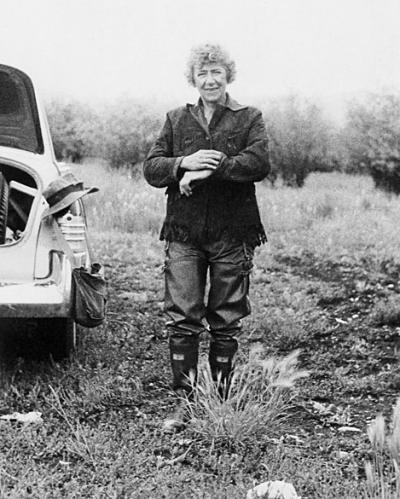
Eventually, the old woman, Mrs. Weasel Head, consented to pose for her portrait, so long as Lochrie herself would sit on a pile of manure while she painted. Elizabeth Davey Lochrie agreed.
An artist renowned for her incisive portraits of Native Americans, Lochrie was no ordinary banker’s wife. She did not hesitate to make her way alone into hostile situations. She considered the work she was doing to be of real importance.
Elizabeth Davey Lochrie was born in Deer Lodge, Montana, in 1890. Her father, Frank Davey, was the city engineer; her mother, Mary (“May”), raised four children and was active in the genteel society of the town. Davey’s upbringing was unconventional. Her parents were open-minded for their time. She was raised to ride bareback almost as soon as she could walk, and she was taught all the outdoor skills befitting a frontier boyhood. Her parents exposed her to art and music. Crucially, they also encouraged her fascination with the community of Cree Indians who had an encampment near their home. They allowed her to play among their teepees and learn their sign language. It was an unusual childhood for Elizabeth Davey. Then, when she was only 12, Frank Davey was unexpectedly murdered. He had been reprimanding a local teenager for swearing in front of ladies; the boy, who was drunk, killed him.
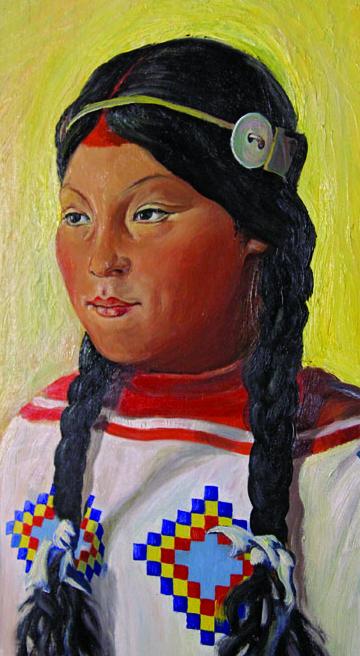
Elizabeth Davey’s mother was obliged to support the family by teaching in Butte. She was often away from her young children. She nonetheless ensured that they received a good education. Davey was able to take art classes in Butte, and eventually attend Pratt Institute of Art in Brooklyn, New York, at the age of 19.
Elizabeth Davey was able to complete her degree in only two years. She returned to Montana, met and became engaged to Arthur Lochrie. The two married in 1913.
Arthur Lochrie was a banker who was supportive of his wife’s interests, which allowed her to pursue her art career. Lochrie taught art, painted murals, and did landscape painting with some success. In 1931, she began to produce the work for which she is most recognized: her portraits of American Indians.
Lochrie’s daughter Betty McGlynn describes how this came about:
The Lochries attended a bankers’ convention held in beautiful Many Glacier Hotel. At that time the Great Northern Railroad paid members of the Blackfeet tribe to pitch their teepees in a cottonwood grove near the big lodge, in exchange for staging a “war dance” to entertain guests in the evening... One afternoon Elizabeth left the convention to sketch near the teepees. A Madonna-like Blackfeet woman happened by and the two greeted each other in sign language. For both there was an instant rapport, the beginning of an enduring friendship.
The woman Lochrie had met was Gypsy Bull Child; her husband was Blackfeet Chief George Bull Child.
Through this friendship Lochrie was able to develop personal relationships with other members of the Blackfeet, many of whom she painted and many of whom she was able to befriend. Something about Elizabeth Lochrie, perhaps it was an artifact of her intimate childhood acceptance among the teepees of the Cree, enabled her to transcend what she herself recognized as the usual distrustful attitude of these Indians.
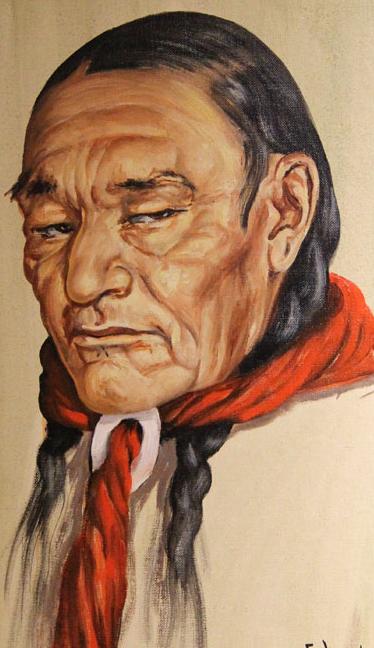
Lochrie was invited by the Bull Childs to become an adopted member of the Blackfeet tribe in the true traditional Blackfeet ceremony. She was given the name Netchitaki, translated as “Woman Alone in her Way.”
It was a fitting name. From this point on, Lochrie devised a regular schedule of traveling by herself each summer to visit Indian tribes throughout Montana, painting and sketching the people, observing and documenting their traditional practices in loving and respectful detail. She improved her portraiture by studying painting with Winhold Reiss, who had started an art school at St. Mary in Glacier Park, and she deepened her understanding of her subject by taking classes in anthropology. In an era when such independence was considered unusual for a woman, she drove her Cadillac unaccompanied into some of the most remote and unpaved corners of the west.
She kept exhaustive records of what she saw. Among her papers in the Montana Historical Society archives are boxes full of sketches, descriptions and biographical details about her portrait subjects. She studied “comaki”, as she called the Blackfeet language, learning several dialects and some Crow. She kept a record of words and phrases as she learned them.
She was an accepted observer at numerous Sun Dance ceremonies enacted by different tribes; she made meticulous notes. She recorded every detail of ritual regalia, the tempo of the specific dance steps, the facial expressions of the participants:
Each man had a headdress of porcupine hair, some beadwork, and sometimes, a feather. Beaded bands were around the heads and there were ear-rings or side decorations, on the braids…
As with Mrs. Weasel Head, she sometimes encountered resistance and hostility. This she recognized and sympathized with:
…being so poor, even the finest Indian men have to submit to the greatest indignities, to be stared at, to have their most sacred religious ceremonies profaned by the noise and clatter of groups of curious whites, who barge in uninvited to be amused by their prayers, their beautiful face painting and significant ritual costumes.
Elizabeth Lochrie’s interest and scholarship was deeply unselfish. As she became well known as a lecturer on Indian culture, she asked to be compensated with provisions she could send to the tribes. She was personally able to help some individuals financially, and she collected clothing, surplus animal pelts and food to offset the poverty that the tribes suffered.
There was then and there continues to be controversy about permitting non-Native people to witness and perhaps thereby desecrate ancient ways of life and solemn religious traditions. Lochrie was aware of this. But in light of government policies that banned traditional Indian religious practices and forced Indian children to attend English-only boarding schools, she saw her role differently: she felt morally impelled to document every surviving vestige of a precious culture that was fast going extinct. Her affectionate portrayals of specific Native American individuals and her careful records of their ritual observances comprise an invaluable trove of cultural information, for historians and for contemporary Indians as well.
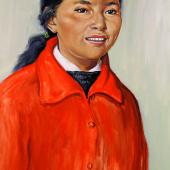
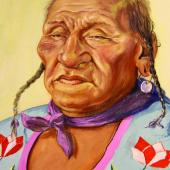
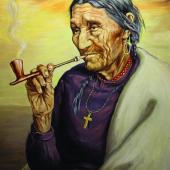
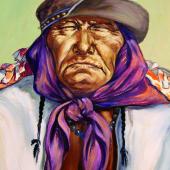
ELIZABETH DAVEY LOCHRIE BIOGRAPHY EXHIBIT
THE HOCKADAY
MUSEUM OF ART
KALISPELL, MONTANA
On Exhibit
August 4 — October 8, 2016
Curator Talk with Jennifer Li
Wednesday, September 28, 2016
6:00 - 7:30 PM
Admission: Members/Free,
Non-members/$10
Photos Courtesy of
Hockaday Museum and Brian Eklund
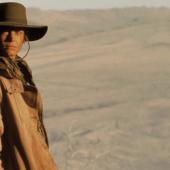
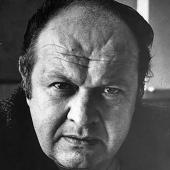
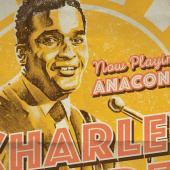
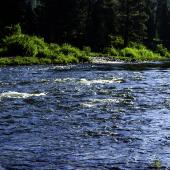

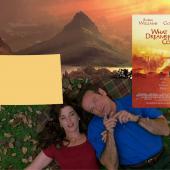
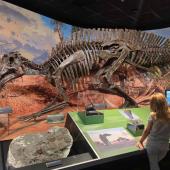
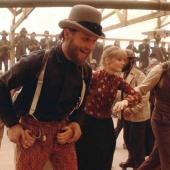
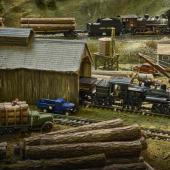
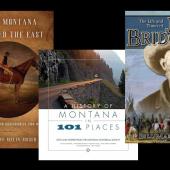
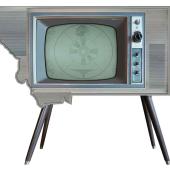
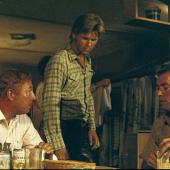
I remember being amazed with the stories Mrs. Lochrie could tell about the person she painted. She had a room full of paintings we were able to look through in the studio. It was breathtaking to be in that room with the lady who could capture these portraits in art. Her painting in Dillon's post office is worth the trip.
- Reply
Permalink